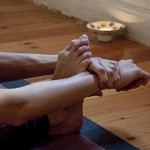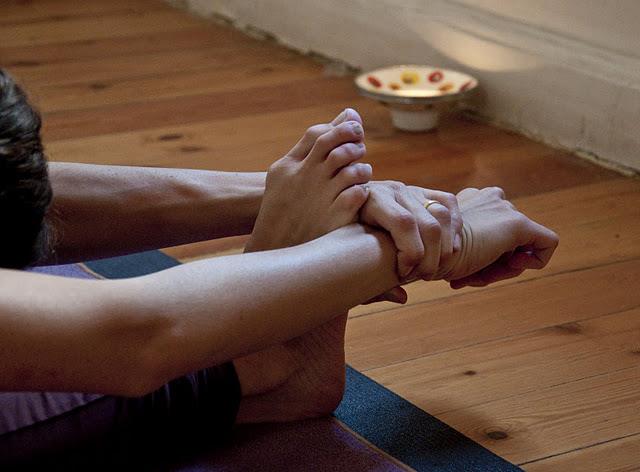
Yoga has become a mainstream form of exercise for many, a way of life for some, and a means to achieve spiritual awareness for a few seekers of enlightenment. There are many forms of yoga, from the slow and quiet Hatha all the way to sweatiness of Bikram yoga and the energetic and rigorous Ashstanga. As popularity increases, so do the classes offered in Cairo, all lead by more or less experienced teachers.
Mira Shihadeh teaches Ashtanga yoga in her own studio, or shala to use the correct yoga term, in Cairo. If the idea of a yoga teacher conjures up images of a serene, new-agey and dreamy person who floats benignly through life, Shihadeh is a refreshing surprise.
“I started practicing Ashtanga in 1999 in New York with Eddie Stern,” Shihadeh said. “I liked the seriousness of the practice, I liked that it make me feel at ease in my body and that it kept me grounded. There was none of the floaty stuff going on in that studio, people came in and did their practice seriously and were on their way. The fact Madonna was there practicing was kinda cool as well,” she smiled.
After a few years of practicing with Eddie Stern, Shihadeh moved to Cairo and kept up her practice on her own for a year. “It was harder to do all by myself, but at the time there was no one in Cairo that was teaching, until Charley Taylor came to Cairo. I studied with him for five years,” Shihadeh said. “Towards the end of his time here he pushed me to start teaching, giving me the confidence to use my experience to teach others. He stressed that experience is more important than a certificate.”
Ashtanga yoga was made popular by Pattabhi Jois, who started studying it in 1927. From 1948 Jois, or Guruji as he was lovingly known by his students, started teaching this form of yoga in Mysore, India, and from there it spread all over the world. The practice of Ashtanga is incorporates a special way of breathing. Practice begins and ends with a set series of poses. For the middle part of a session, the practitioner can choose a series of poses, depending on their level.
Most commonly students of Ashtanga will practice by themselves at home or in a shala with a teacher. This is known as Mysore style. “I teach Mysore style yoga, which means the student is responsible for their own practice. There are two kinds of teachers, ones that encourage the students to lean on them and those that teach them to stand on their own two feet,” Shihadeh explains. “I am of the second variety, I am there to teach and help you reach the goals you set for yourself. It is not about me, it is about the student.”
Shihadeh has made a study of anatomy to be better able to help the people that come to her. “It is time for a revolution in ideas on how we approach being healthy.People often come to me as a last resort with physical and mental problems, and are surprised to see what they can achieve once they start practicing. For me, teaching the Mysore method is about empowerment of the person who practices. You become aware of your own body, you get over your self-consciousness and the practice is a form of mental hygiene.”
Shihadeh sees people joining her classes that have spent years in the gym building up impressive muscles. “Their individual muscles are strong, but they are not connected to each other, nor to the person themselves. It can be very confrontational when people realise that a yoga practice starts with your mind and your intelligence.”
Shihadeh’s down to earth approach to her profession is reassuring and her descriptions are funny: “I listen to my students as if they are car engines – if they breathe too easily they are not doing any work, and if their breath stutters and halts they are straining themselves. My job is to help them get to a place where their engines purr.”




